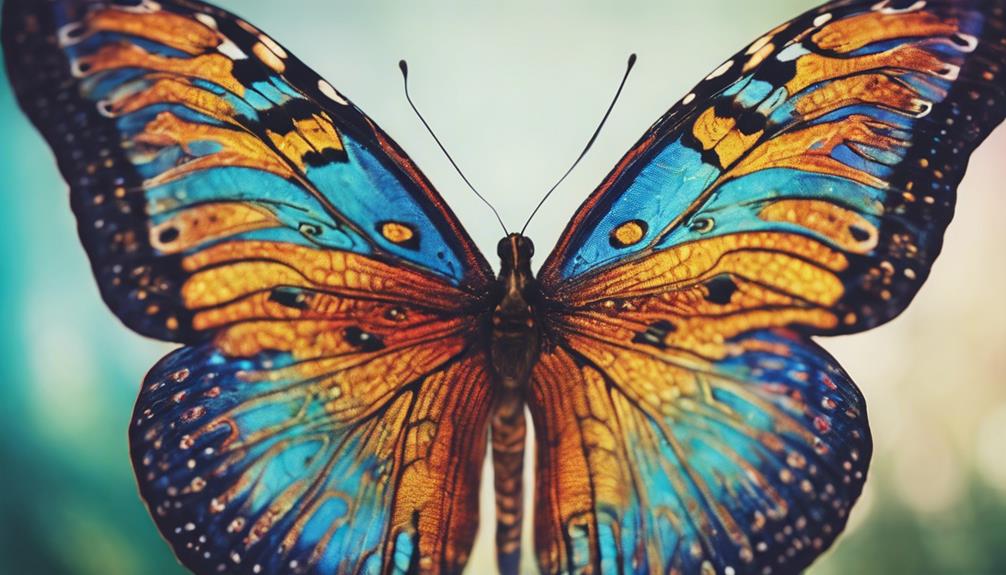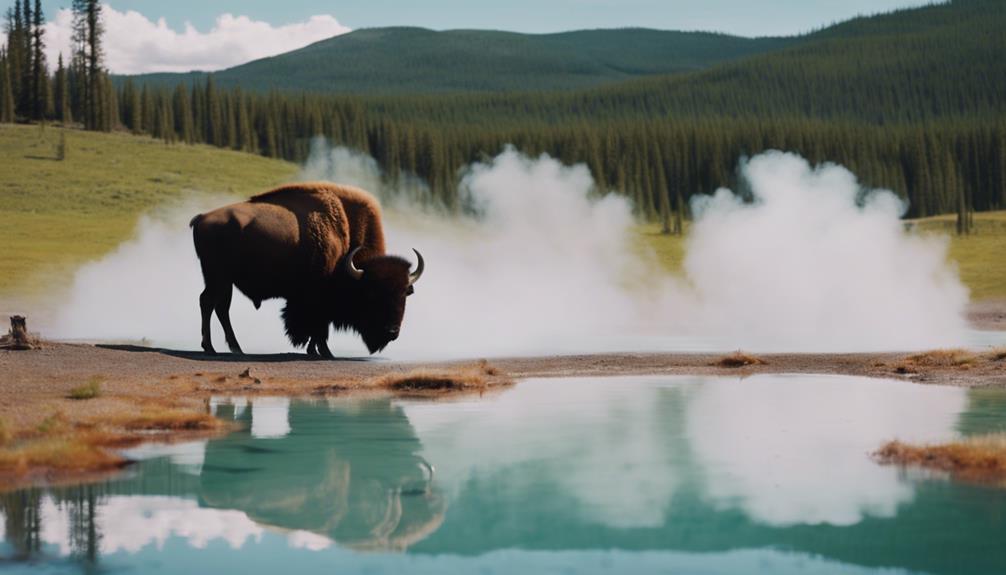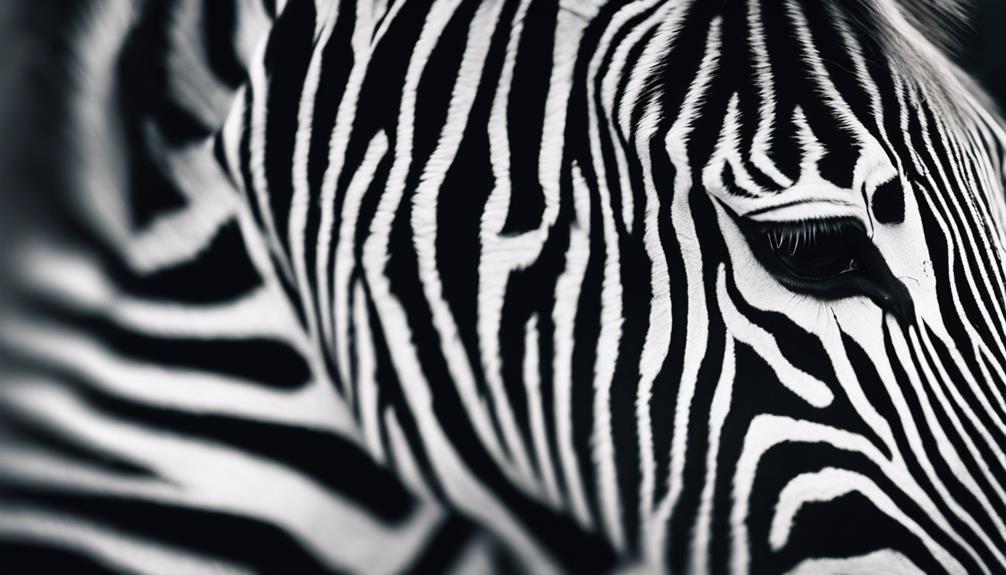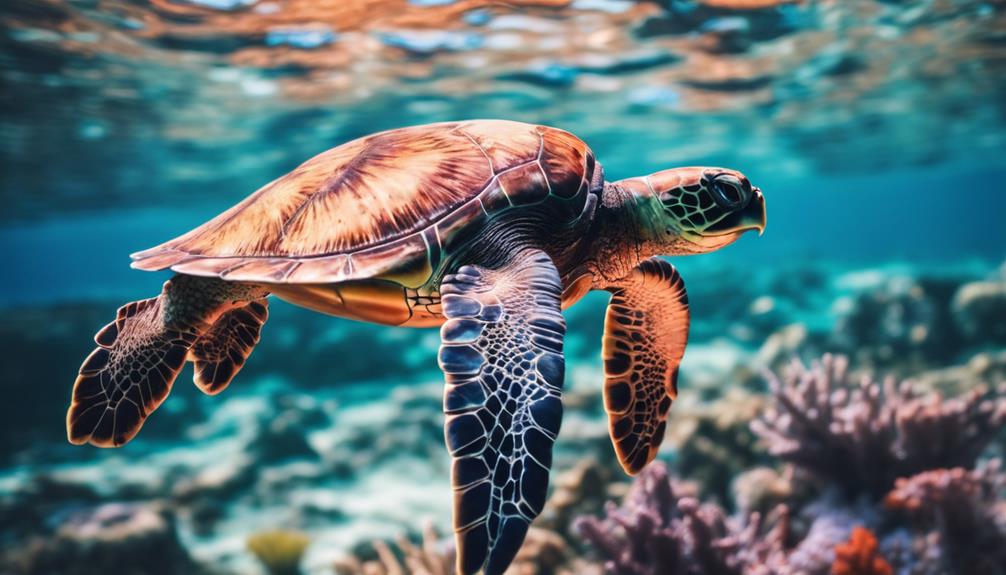Are you ready for an adventure in Grand Teton National Park?
Get ready to explore the breathtaking beauty and fascinating history of this iconic park.
From the towering peaks of the Teton Range to the diverse wildlife that calls this place home, there is something here for everyone.
Whether you’re a seasoned photographer or a nature enthusiast looking for hidden gems, Grand Teton National Park promises to be an unforgettable experience.
So grab your camera and get ready to discover some fun facts about this incredible destination.
Key Takeaways
- The park covers approximately 310,000 acres and was established in 1929.
- The highest peak is Grand Teton, reaching 13,775 feet.
- Over 60 species of mammals can be found in the park, including elk, moose, bison, and grizzly bears.
- Popular activities in the park include hiking, backpacking, fishing, wildlife spotting, rock climbing, and mountaineering.
Location and Size of the Park
The park’s location and size make it a popular destination for outdoor enthusiasts.
Grand Teton National Park is located in northwestern Wyoming, just south of Yellowstone National Park. It covers an area of approximately 310,000 acres, including the majestic Teton Mountain Range.
These mountains were formed around 10 million years ago through a geological process called faulting. The park’s geological features include glacial lakes, alpine meadows, and rugged peaks, providing a breathtaking backdrop for hiking, camping, and wildlife spotting.
Formation and Geological History
Explore the fascinating formation and geological history of this incredible place. Grand Teton National Park is a testament to the ancient landscapes that have shaped its majestic beauty. Here are some key points to deepen your understanding:
- The Teton Range was formed around 9 million years ago through intense tectonic activity.
- Glaciers played a crucial role in sculpting the park’s iconic peaks, valleys, and lakes.
- The park’s rocks reveal evidence of volcanic eruptions that occurred millions of years ago.
- Ancient seabeds can be found in some areas, showcasing the park’s diverse geological past.
- Ongoing geological processes continue to shape the landscape, making it a dynamic and ever-changing environment.
Teton Range and Mountain Peaks
Discover the breathtaking beauty and towering heights of the Teton Range and its majestic mountain peaks.
The Teton Range is a part of the Rocky Mountains, located in Wyoming. Its geography features stunning glacial valleys, pristine lakes, and rugged terrain.
These mountains offer a thrilling challenge for climbers with iconic peaks like Grand Teton reaching over 13,000 feet. Embark on an adventure to conquer these peaks and experience the sense of accomplishment that comes with reaching their summits.
Unique Wildlife and Biodiversity
Visitors can witness the unique wildlife and biodiversity of the Teton Range during their journey through the park.
Grand Teton National Park is home to over 300 species of birds, as well as large mammals like elk, moose, and bison.
The park’s wildlife conservation efforts focus on protecting endangered species such as grizzly bears and gray wolves.
Jackson Hole and Surrounding Areas
The Jackson Hole area offers a variety of outdoor activities and breathtaking scenery for nature enthusiasts.
- Enjoy thrilling winter sports like skiing and snowboarding on the slopes of Jackson Hole Mountain Resort.
- Take in the stunning views while snowshoeing or cross-country skiing through Grand Teton National Park.
- Indulge in delicious local cuisine, from hearty game meat dishes to farm-to-table creations.
- Explore the charming town of Jackson, known for its Western atmosphere and art galleries.
- Unwind with a soak in the natural hot springs that dot the area.
Famous Hiking Trails and Outdoor Activities
There are plenty of famous hiking trails and outdoor activities to enjoy in the Jackson Hole area. Whether you’re a seasoned hiker or a nature enthusiast, this region has something to offer for everyone. Take a look at the table below to discover some of the most popular hiking trails and outdoor activities available in Jackson Hole:
| Trail Name | Difficulty Level | Highlights |
|---|---|---|
| Cascade Canyon | Moderate | Stunning mountain views and wildlife sightings |
| Jenny Lake Loop | Easy | Crystal clear lake and picturesque scenery |
| Death Canyon | Challenging | Rugged terrain and panoramic vistas |
| Taggart Lake | Easy | Tranquil alpine lake surrounded by majestic peaks |
| Phelps Lake Loop | Moderate | Beautiful waterfall and relaxing picnic spots |
No matter which trail you choose, you’ll be treated to breathtaking views, peaceful surroundings, and an unforgettable outdoor experience. So grab your gear, lace up your boots, and embark on an adventure in the great outdoors of Jackson Hole!
Stunning Lakes and Rivers
If you’re looking to cool off and enjoy some water activities, the stunning lakes and rivers in Jackson Hole are perfect for swimming, kayaking, or simply relaxing by the shore.
The crystal-clear waters of Jenny Lake offer incredible views of the Teton Range while providing excellent opportunities for boating and fishing.
Snake River, known for its scenic beauty, is ideal for rafting and paddleboarding adventures.
So grab your gear and dive into the refreshing waters of these stunning lakes and rivers!
Historical Significance and Native American Heritage
Visiting Jackson Hole allows you to explore the rich historical significance and Native American heritage of the area.
You can learn about the various Native American tribes that have inhabited this land for centuries, such as the Shoshone, Crow, and Blackfeet.
Their cultural preservation efforts are evident in traditional ceremonies, art, and storytelling.
Famous Visitors and Pop Culture References
Famous visitors like Harrison Ford and Sandra Bullock have been spotted in Jackson Hole, adding to the area’s pop culture references. Their presence highlights the allure of this picturesque destination and its connection to the world of celebrities.
With its breathtaking landscapes and luxurious resorts, Jackson Hole attracts not only nature enthusiasts but also those seeking a taste of glamour. It’s no wonder that this spot has become a favorite among famous individuals looking for a retreat in the heart of nature.
Conservation and Environmental Initiatives
The community of Jackson Hole is actively involved in conservation and environmental initiatives, working to preserve the natural beauty of this picturesque destination. Conservation efforts are focused on protecting the diverse wildlife and ecosystems found in the area. Environmental impact assessments are conducted to ensure that any development or activities minimize their negative effects on the environment. By implementing these measures, Jackson Hole strives to maintain its pristine landscapes for future generations to enjoy.
| Conservation Efforts | Environmental Impact Assessment |
|---|---|
| Protecting wildlife | Minimizing negative effects |
| Preserving ecosystems | Ensuring sustainable practices |
| Maintaining natural beauty | Assessing potential impacts |
| Sustainable development | Mitigating harmful consequences |
| Promoting environmental stewardship | Evaluating environmental risks |
Table: Conservation and Environmental Initiatives in Jackson Hole
Weather and Climate Patterns
You’ll want to pack layers when visiting Jackson Hole because the weather and climate patterns can vary greatly throughout the year.
- Climate change is impacting the weather in Jackson Hole, leading to more extreme temperatures and unpredictable conditions.
- It is important to stay informed about weather forecasts and be prepared for sudden changes.
Dressing in layers allows you to adjust your clothing as needed.
- Always carry a rain jacket or waterproof gear, as rain showers can occur unexpectedly.
- In winter, be cautious of icy roads and avalanches by checking road conditions and following safety guidelines.
Best Times to Visit for Wildlife Viewing
During the spring and fall, you can spot a wide variety of wildlife in Jackson Hole. The best times to visit for wildlife viewing are early morning and late afternoon when animals are most active. According to wildlife population statistics, the park is home to over 60 species of mammals, including elk, moose, bison, and grizzly bears. Keep your eyes peeled and enjoy the thrill of observing these magnificent creatures in their natural habitat.
| Wildlife | Population Statistics |
|---|---|
| Elk | 10,000 |
| Moose | 1,500 |
| Bison | 700 |
| Grizzly Bears | 200 |
| Black Bears | 300 |
Photography Tips and Scenic Views
For the best scenic views in Jackson Hole, try capturing photos during golden hour for stunning lighting effects.
To enhance your photography techniques and capture wildlife in their natural habitat, follow these tips:
- Use a telephoto lens to get close-up shots of animals without disturbing them.
- Set your camera to burst mode to capture fast-moving wildlife with precision.
- Experiment with different angles and perspectives to add depth and interest to your photos.
- Patience is key – wait for the perfect moment to capture that breathtaking shot.
With these techniques, you’ll be able to capture incredible wildlife photographs while enjoying the beauty of Grand Teton National Park.
Camping and Accommodation Options
There are various camping and accommodation options available for visitors in Jackson Hole. If you’re looking to camp, consider popular campgrounds like Jenny Lake Campground or Gros Ventre Campground.
Be sure to pack essential camping gear such as a tent, sleeping bag, and cooking supplies. And don’t forget about camping tips like setting up your tent on level ground and storing food properly to prevent wildlife encounters.
Enjoy the great outdoors while staying in Jackson Hole!
Must-See Attractions and Hidden Gems
One of the must-see attractions in Jackson Hole is the National Elk Refuge, where you can observe a large herd of elk up close. It’s an incredible experience to witness these majestic creatures in their natural habitat.
As you explore further, you’ll discover hidden gems like Jenny Lake and its breathtaking views of the Teton Range. Another hidden gem is Schwabacher Landing, where you can capture stunning reflections of the mountains in the Snake River.
Don’t miss out on these awe-inspiring attractions!
Frequently Asked Questions
Are there any restrictions or guidelines for photography in Grand Teton National Park?
There are some restrictions and guidelines for photography in Grand Teton National Park. These include respecting wildlife and vegetation, obtaining permits for commercial photography, and following drone regulations to protect the park’s natural beauty.
What are some lesser-known hiking trails in the park that offer stunning views?
Explore hidden gems and off the beaten path trails in Grand Teton National Park for stunning views. Immerse yourself in nature’s beauty, with lesser-known hiking trails that offer breathtaking vistas you won’t want to miss.
Can you swim or fish in the lakes and rivers of Grand Teton National Park?
You can swim in some lakes and rivers in Grand Teton National Park, but there may be swimming restrictions for safety reasons. Fishing is allowed with proper permits and following fishing regulations set by the park.
Are there any guided tours or educational programs available for visitors?
Yes, there are guided tour options and educational programs available for visitors. You can explore the park’s stunning landscapes with a knowledgeable guide or participate in interactive programs to learn more about its wildlife and history.
What are some safety tips for camping in the park, particularly regarding wildlife encounters?
When camping in Grand Teton National Park, follow these wildlife safety guidelines: store food properly, keep a safe distance from animals, never feed or approach them, and make noise to alert them of your presence.
Conclusion
In conclusion, Grand Teton National Park offers a multitude of attractions and experiences for visitors. It is truly a nature lover’s paradise with stunning mountain peaks, diverse wildlife, and breathtaking views. Whether you’re interested in hiking, photography, or simply enjoying the serenity of the park, there is something for everyone to enjoy.
So pack your bags and embark on an unforgettable adventure in this remarkable national park. Don’t miss out on the opportunity to explore its hidden gems and create lasting memories.





